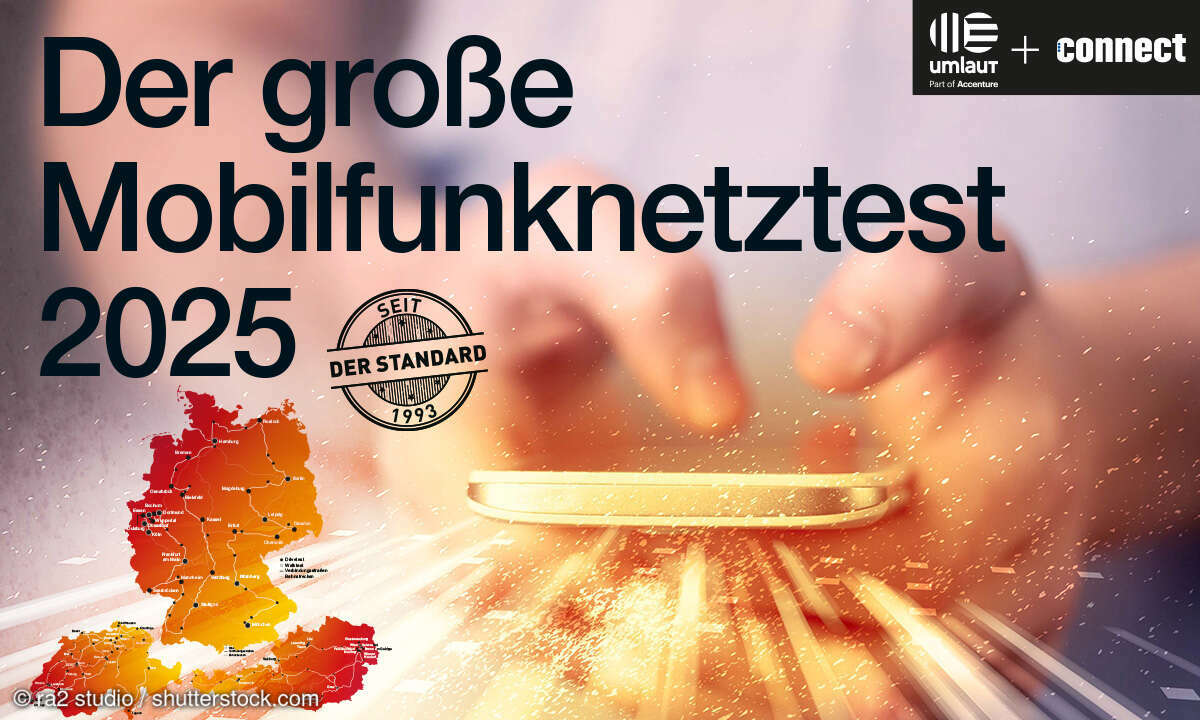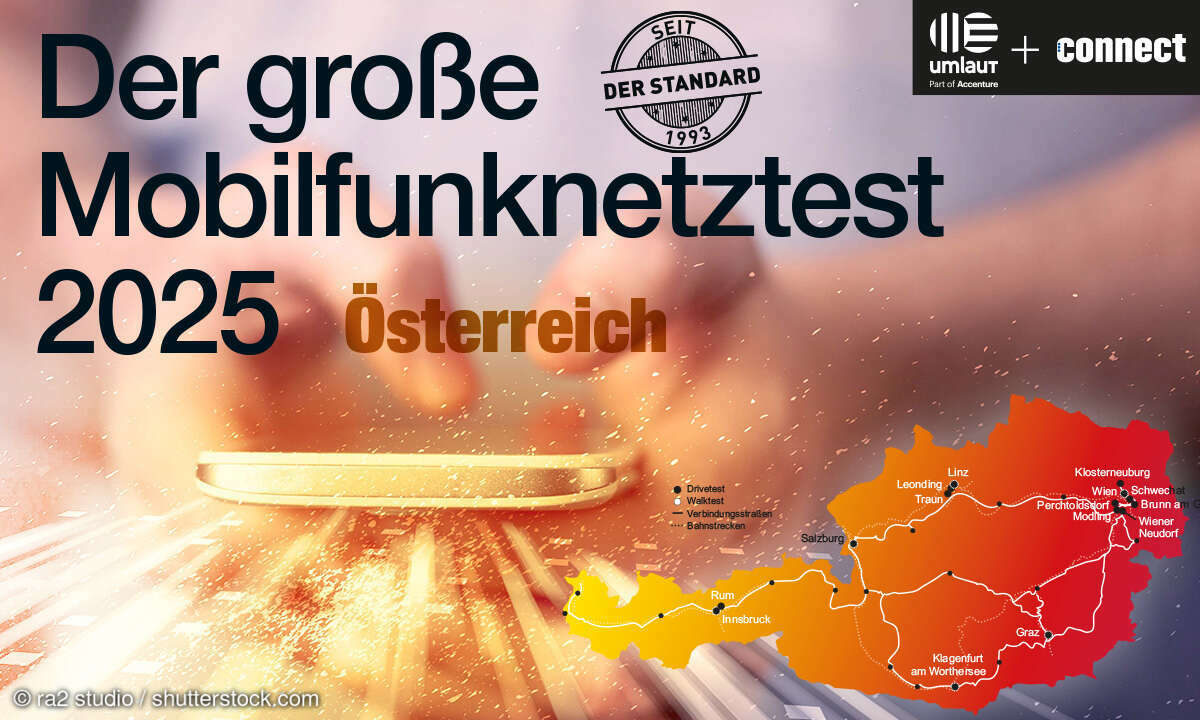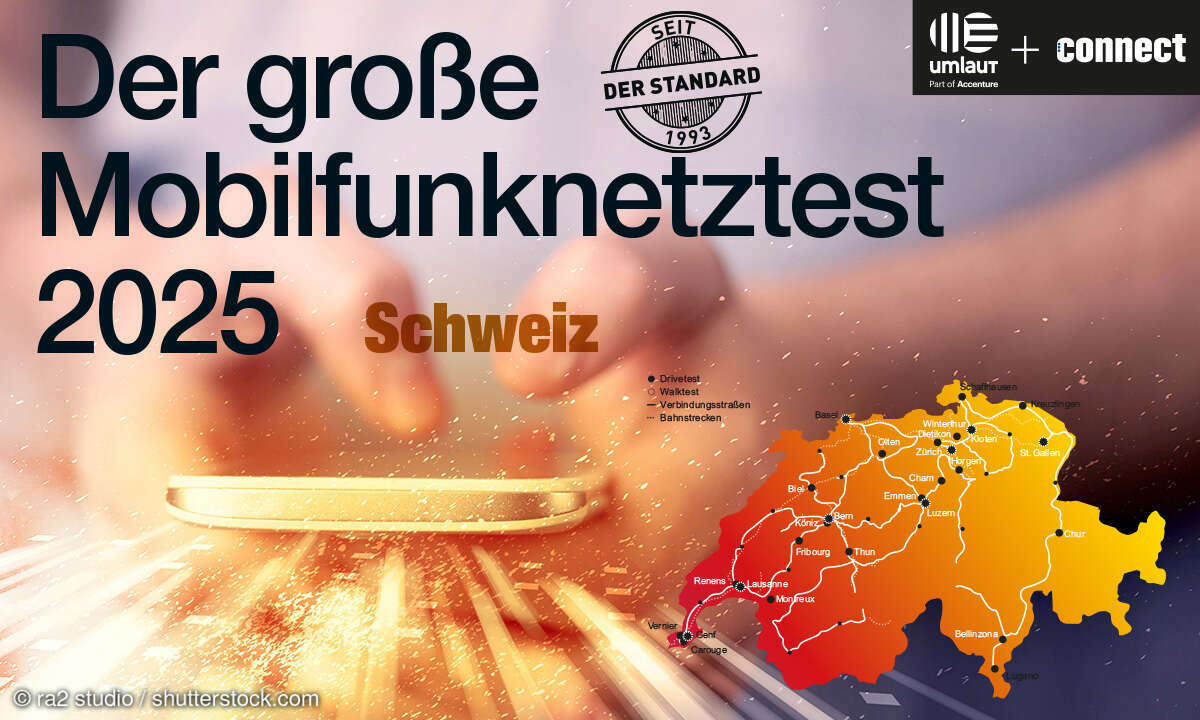Data connections
When it comes to 5G coverage and in our measurements, Telekom is ahead overall – more clearly in the countryside than in the cities. But Telefónica is catching up.
When looking at the overall points in the important Data discipline Telekom can maintain exactly its result from the previous year, Telefónica improves by two points, while Vodafone loses three points. In the drive and walk tests, which were carried out with the powerful Samsung S23, which is designed for all network configurations, the progress in 5G expansion is also clear: In the sum of the measured values collected in these 5G tests, Telekom is ahead overall – in Large cities with more than 99% (Telefónica/O2: almost 96%, Vodafone: around 89%).
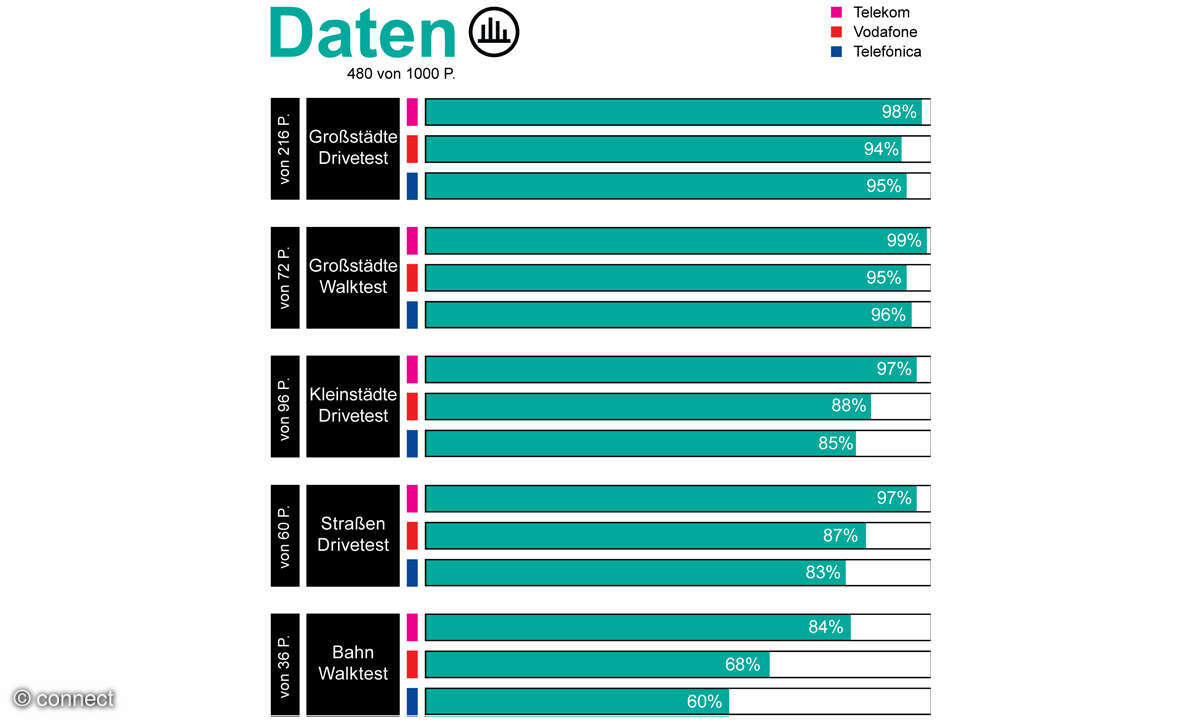
Outside the big cities, however, Vodafone has a larger 5G share than Telefónica: in small towns, Telekom has over 97%, Vodafone around 80% and Telefónica around 74%. On the connecting roads, Telekom is also in the lead with a 5G share of around 93%, Vodafone achieves around 76% and Telefónica around 71%. Bonn’s 5G lead is even clearer on the trains: Even there, our measurements in the Telekom network still show a 5G share of over 95%, while Vodafone only has just under 65% and Telefónica just under 58%. How much of this 5G coverage actually reaches customers is shown in the “Mobile Communications Standards” information.
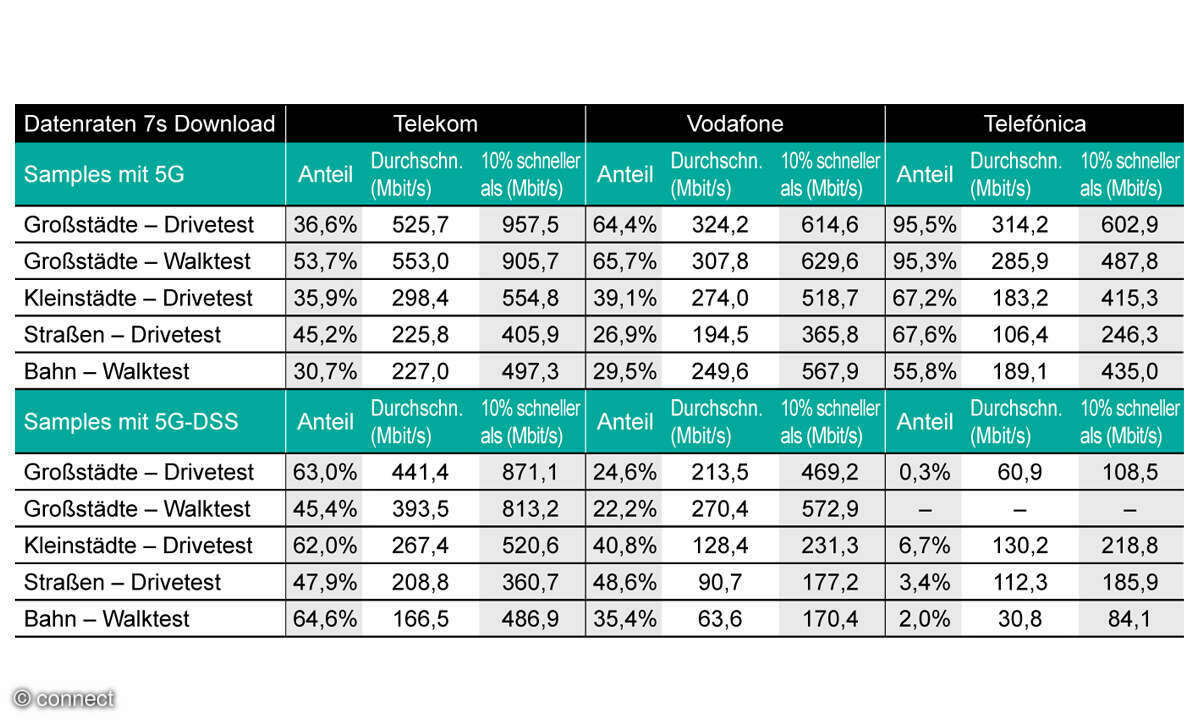
Cities: Telekom leads, Telefónica ahead of Vodafone
In the context of the Drive and walk tests Telekom is ahead when it comes to data measurements carried out in large cities. In both cases, Telefónica/O2 follows at a distance, but is one percentage point ahead of Vodafone. Munich’s network expansion in major cities is having an impact here. In terms of data rates recorded in urban drive tests, the P90 value (the fastest 10%) in the Telekom network is an impressive 915 Mbit/s, while Telefónica/O2 with 598 Mbit/s and Vodafone with 564 Mbit/s follow each other closely. The walk tests show a slight advantage for Vodafone.
Telecom in the countryside ahead
In smaller cities and on the connecting roads, Telekom’s lead is growing, with Vodafone and Telefónica/O2 only following at some distance. At the level of the tested services, Telefónica/O2 shows potential for improvement, especially when it comes to YouTube views. What is pleasing, however, is that despite varying performance, the success rates of most of the tested applications are quite high.
Small improvements in German trains
When it comes to the ongoing problem of rail, all three providers made small improvements compared to the previous year. But the gap to the other test scenarios is clear. Here too, Telekom achieved the best results in relative terms, Vodafone follows at a clear distance, Telefónica/O2 once again well behind. But perhaps we will see the first successes of the expansion efforts that have been started by all operators.
Voice connections
When it comes to making calls in cities, Vodafone is hot on the heels of the leading Telekom, with Telefónica/O2 following a short distance behind. In rural areas the differences are greater.
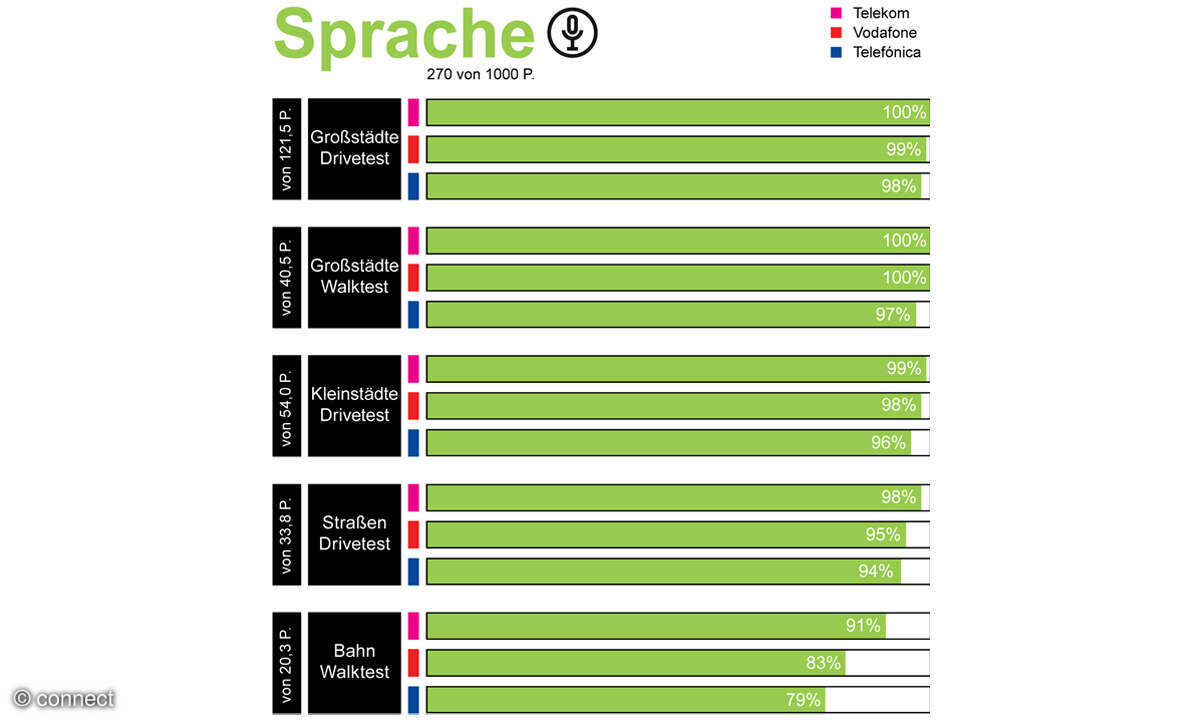
That those in the Telephony discipline The achieved score values are high overall and this particularly applies to the success rates is good news. When making calls, quality deficiencies are particularly noticeable when the connection is not established or the voice quality is extremely poor.
Telekom in big cities just ahead of Vodafone
There are differences in the big cities, but they are very small. The further you move into the flat land, the larger the gap becomes between Telekom, which is also the leader here, and second-placed Vodafone and third-placed Telefónica.
Despite gaps, Telekom is at the forefront on connecting roads and on the train
The distances are still negligible even in small towns. The backlog of Vodafone and Telefónica on the connecting roads is more pronounced. This is particularly noticeable for drivers who want to make phone calls while driving. When making calls on the train, the air is getting thinner with all three providers, but Telekom still achieves the best results.
However, in this discipline, both Bonn and Vodafone fell behind the scores they achieved last year. A small ray of hope is that Telefónica/O2 can reduce the gap to Vodafone in the most difficult test scenario and become the only provider in the test field to improve.
Crowd
The crowdsourcing, based on the user experience of a large number of customers, shows the increasingly tough battle between the leading Telekom and the pursuer Vodafone.
Long-time connect readers already know: While drive tests and walk tests concentrate on the maximum services provided by the networks, the focus is on Crowdsourcing in breadth: The analysis of over 16.5 billion samples contributed by almost 3.6 million users allows conclusions to be drawn about the “user experience” – how well is the performance of the networks received by all of its users? The evaluation of broadband quality shows that 5G or at least 4G reaches almost all customers who are even registered on the mobile network.
In all partial results for broadband coverage, Telekom is ahead, but Telefónica manages to narrowly overtake its competitor Vodafone. “How we test” explains exactly how quality, range and time are defined in broadband coverage. When it comes to the data rates achieved by customers, Telekom leads in almost all values; Vodafone is only ahead when it comes to the P10 value (90% of the samples faster than) of the active download data. In active upload measurements, Telefónica is in second place ahead of third-placed Vodafone.
Telekom also achieved the largest shares in the latency class evaluations. In the basic categories (OTT voice services and gaming), Vodafone and Telefónica follow in this order and overall keep up quite well with the Bonn-based company. In the most demanding latency class “High-End Gaming”, Telekom is expanding its lead, but Telefónica/O2 achieves a higher share than Vodafone. When it comes to HD telephony and stability, the ranking is Telekom – Telefónica – Vodafone.
reliability
In our separate look at the basic requirements, Telekom is also ahead and Vodafone is a little behind. All three networks deliver stable performance.
The chapter “reliability“ is not a separate testing discipline, but rather a different look at the results of the preceding categories. The analysis here focuses on the basic requirements and ignores the KPIs that are more focused on top performance. The result shows how well the providers provide their customers with the services relevant to everyday use. The rating shows no significant differences compared to the overall picture.
The ranking and the distances between the three candidates remain approximately the same in all considerations. Telefónica has to accept a more pronounced loss of points, especially in the walk tests in the language discipline – the weaknesses in supply found on the train have a particular impact here. But this also applies to Vodafone and, to a somewhat lesser extent, to Telekom. Vodafone also achieved a solid second place in the reliability rating in all categories behind leader Telekom. However, in crowdsourcing and overall, Telefónica can reduce its gap to second place.
Radio standards
What developments are there in the networks when expanding from 5G NSA to 5G SA? This question can be answered through crowdsourcing.
How the expansion of mobile networks is progressing is no longer just reflected in the answer to the question “Is 5G available?” The next step in 5G expansion is the development of 5G non-standalone (NSA, shared core network with 4G) to 5G standalone (SA, own 5G core network).
In Germany, Telefónica/O2 and Vodafone already offer “5G SA” – O2 since autumn 2023, Vodafone since spring 2024. In both cases, customers need suitable devices and must register for “5G plus”. Telekom is still holding back here. Since we have deliberately not yet taken 5G SA into account in our drive tests and walk tests, the development can best be seen from the crowdsourcing data collected by umlaut.
The table below shows what proportion of the samples were received via which radio standard. We show the percentage values at the beginning and end of this year’s observation period – but for the entire data pool, without the filtering carried out in the crowd discipline. The increase in 5G overall and in 5G SA is clear. The fact that the 5G shares are smaller than in the drive and walk tests is due to the devices and tariffs used.
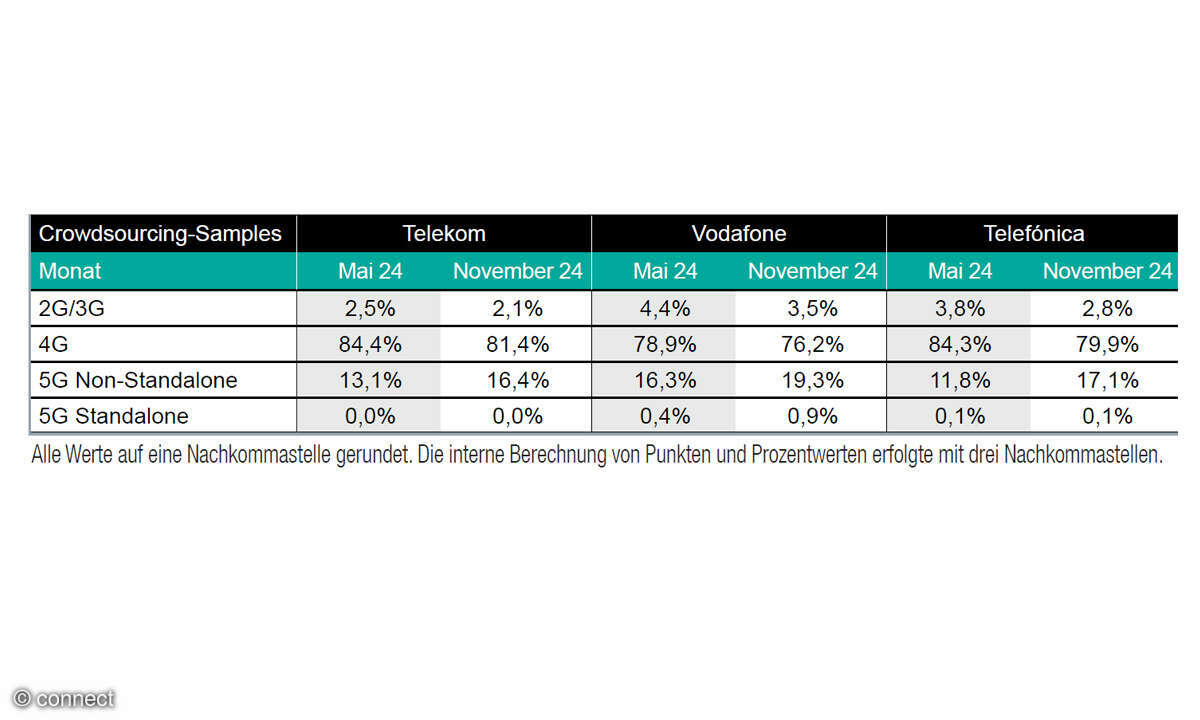
Results Germany
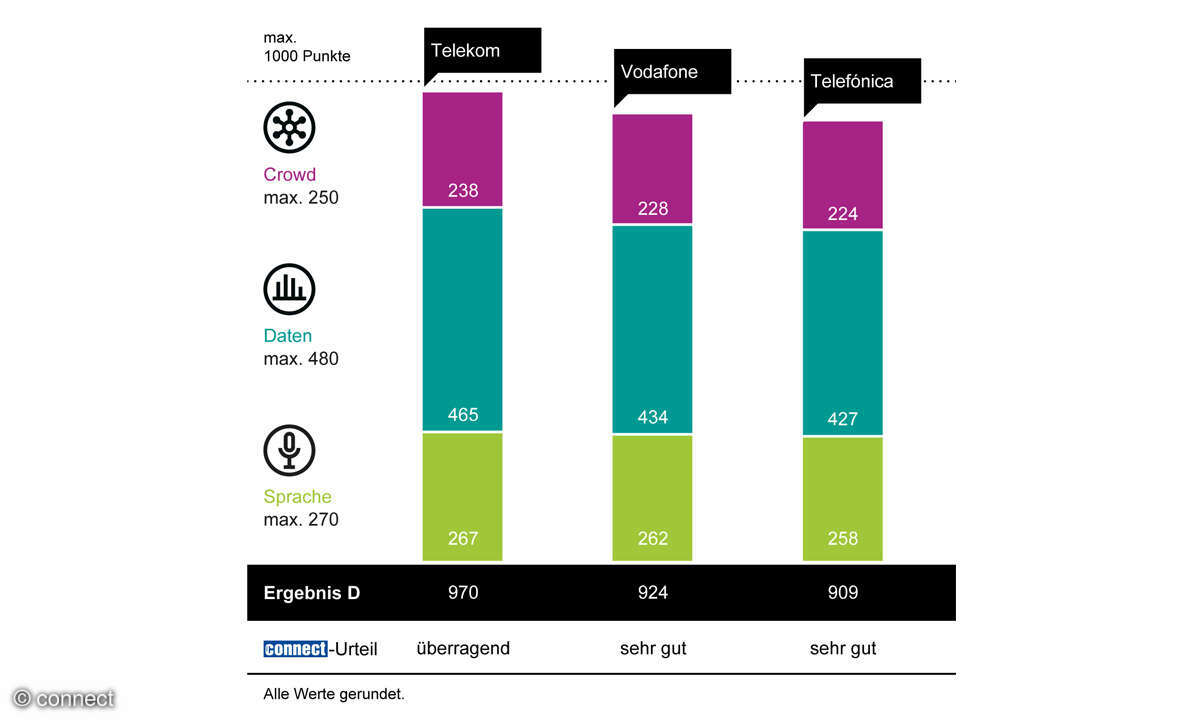
Telekom
The 14th test victory in a row is clear proof of the performance of the Telekom network and the technicians responsible for it. The fact that the Bonn-based company was able to increase its result by three more points this year compared to last year’s result, even in the high spheres of the rare top grade “outstanding”, also speaks for a very consistent network expansion.
Test winner
Mobile & 5G network test 2025
Deutsche Telekom
Deutschland
November 2024
Vodafone
Vodafone essentially maintained the previous year’s results, which should not be underestimated given the increasing number of competitors and increasing customer requirements. Düsseldorf’s second place is confirmed throughout all test categories. Their lead in 5G expansion outside major cities is also clear, ahead of third-place Telefónica/O2.
Very good
Mobile & 5G network test 2025
Vodafone
Deutschland
November 2024
Telefónica/O2
This time, Telefónica/O2 achieved the most significant increase among the German network operators: the Munich-based company improved its previous year’s result by a whopping 14 points. This means it remains in third place, but in some categories such as data services in large cities and some crowdsourcing KPIs, O2 overtakes its competitor Vodafone, and in others the gap is shrinking.
Very good
Mobile & 5G network test 2025
Telefónica/O2
Deutschland
November 2024
Results at a glance
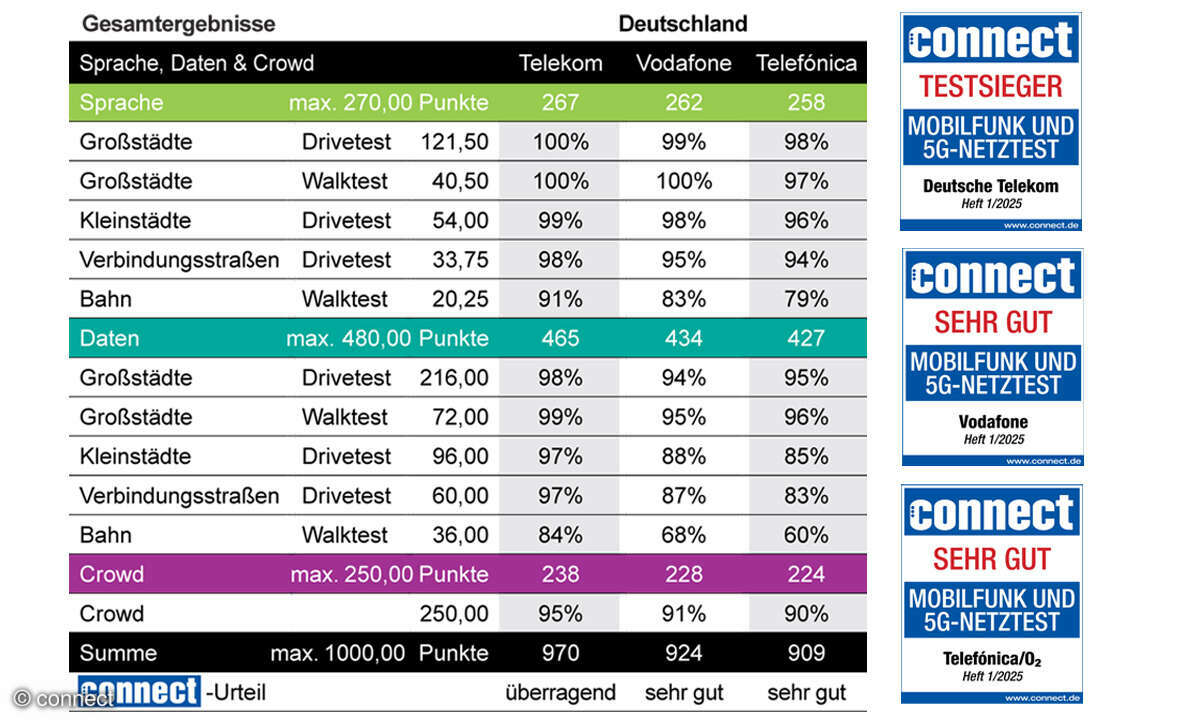
As in the previous year, in addition to the nationwide test, this time we evaluated the five largest metropolitan areas in Germany separately in order to be able to show their residents which provider performed best for them.
More on the topic: o2 Deutsche Telekom Vodafone
Source: www.connect.de


